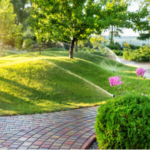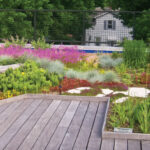Sustainable landscaping is becoming increasingly popular as people look for ways to minimize their impact on the environment. This practice involves using environmentally friendly techniques and materials to create a beautiful outdoor space that requires fewer resources to maintain. By implementing sustainable landscaping practices, homeowners can reduce water usage, minimize chemical exposure, and support biodiversity.
One of the key principles of sustainable landscaping is water conservation. This can be achieved through practices such as using drought-tolerant plants, installing rain gardens, and utilizing mulch to retain soil moisture. By reducing the amount of water needed to maintain a landscape, homeowners can lower their water bills and decrease their reliance on unsustainable water sources.
Another important aspect of sustainable landscaping is soil health. Healthy soil is essential for supporting plant growth and promoting biodiversity. Practices such as composting, using organic fertilizers, and planting cover crops can help improve soil quality and reduce the need for chemical fertilizers and pesticides. By nurturing the soil, homeowners can create a thriving ecosystem in their backyard that benefits both plants and wildlife.
In addition to conserving water and promoting soil health, sustainable landscaping also focuses on reducing waste. This can be achieved through practices such as recycling yard waste, using reclaimed materials for hardscaping, and selecting durable plants that require minimal maintenance. By minimizing waste and choosing long-lasting materials, homeowners can lower their environmental footprint and create a more sustainable outdoor space.
Biodiversity is another important aspect of sustainable landscaping. By selecting a variety of native plants, homeowners can attract a diverse range of wildlife to their garden, including birds, butterflies, and pollinators. Supporting biodiversity not only creates a healthier ecosystem, but also helps to strengthen the resilience of the landscape by promoting natural pest control and reducing the risk of plant diseases.
Overall, sustainable landscaping offers a holistic approach to creating a beautiful outdoor space that is environmentally friendly and low-maintenance. By implementing water conservation practices, promoting soil health, reducing waste, and supporting biodiversity, homeowners can create a sustainable landscape that benefits both the environment and their well-being. With a growing emphasis on sustainability and environmental stewardship, sustainable landscaping is a valuable practice that can help protect the planet for future generations.
















